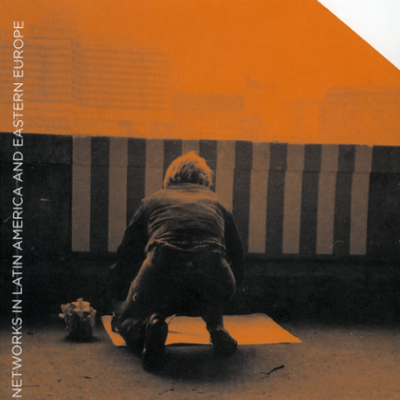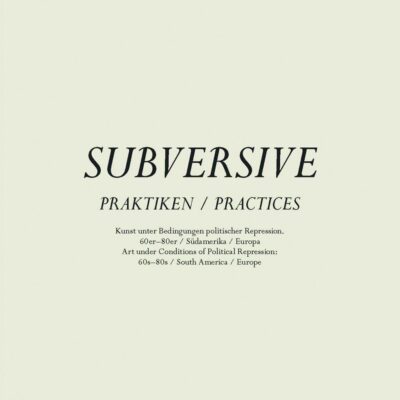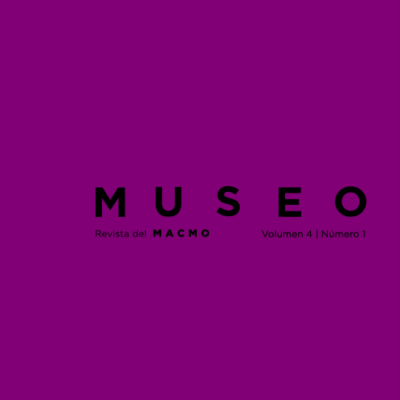Common Ground: What Connects CEE and LA Art. Previous Narratives and Possible New Approaches (from a Feminist Perspective)
Author: Wiktoria Szczupacka
This blog post departs from the initial concept of the Narrating Art and Feminism seminar, which is based on bringing together two regions, Central and Eastern Europe (CEE) and Latin America (LA). Such a connection, deriving from the protest against the hegemony of Western art history and its discourses, has, however, its own history. In this short text, based on one of the seminar meetings, I shall explore the reasons for connecting these two regions, described in another and previous art related projects. Then, referring to the seminar discussion, I shall try to identify potential new directions of finding the common ground between these two regions.
On November the 22th, 2022, during one of the initial meetings of the seminar Narrating Art and Feminisms: CEE and LA, we discussed previous projects (book, special issues of magazines, research and exhibition projects) that were based on the connection between CEE and LA art. Divided in small groups, each consisting of seminar participants from the both sides of Atlantic, we prepared short and critical presentations about the four chosen projects. These were in turn:
Klara Kemp-Welch and Cristina Freire (eds), ‘Artists’ Networks in Eastern Europe and Latin America’, ARTMargins, volume 1, issue 2-3, (June-October 2012).
A special Issue of Art Margins magazine that gathered texts of authors from both regions. The common ground was described as the artists’ networks, contacts, and exchanges, that artists from the two ‘margins’ of the Western and North-American art world (or the two margins of the Cold War) pursued. It described “independent artists’ initiatives” that developed in LA amidst the military dictatorship, and in CEE, where they were characterized as artists’ commitment to free cultural exchange and networking or creating an alternative sense of belonging.
Caterina Preda, Art and Politics Under Modern Dictatorships: A Comparison of Chile and Romania, Palgrave Macmillan, 2017 .
An academic book based on comparative research of two case studies: Romania and Chile. The common ground for the discussion about art was the dictatorship of Nicolae Ceaușescu (Romania) and Augusto Pinochet (Chile). In her research, Preda was posting a question: ‘How to understand the relationship established during modern dictatorships between art and politics?’.
Subversive Practices: Art under Conditions of Political Repression: 60s–80s / South America / Europe, eds. Hans D. Christ, Iris Dressler, Exh.-Cat. Württembergischer Kunstverein Stuttgart, Ostfildern 2010
A research and exhibition project that was ‘involving the survey, critical analysis, and redefinition of conceptual art practices, ranging from the nineteen-sixties to eighties, which were generated under conditions of military dictatorship and of communist and socialist regimes in Latin America and Europe’. As mentioned, the project was focused on conceptual art and on terminologies, historiographies and the political context.
Ice Floe: The Institutional issue. Crossroads between Eastern Europe and the River Plate region, National Museum for the Visual Arts of Montevideo, 2017
Another exhibition and research project. Started in Ljubljana City Gallery (Slovenia) in 2015 and then exhibited as Ice Floe: The Institutional issue. Crossroads between Eastern Europe and the River Plate region at the National Museum for the Visual Arts of Montevideo (Uruguay) in 2017. The curators selected ten case studies from Eastern Europe to be placed in dialogue with nine similar projects from Argentina and Uruguay. The common ground was an institutional critique.
At the end of the presentations, we asked ourselves a question: if the above-mentioned perspectives and comparisons were productive for feminist art history? Although they often derive from the idea of the margin and objection against the hegemonic narrative, they revolve around the art of the 1960s and 1980s, neo-avant-garde, conceptual art, critical art and sometimes even touch upon feminist art and artists; none of the projects thematized them. They also did not critically address the somewhat masculine circle of mail art or neo-avant-garde artists.
This fact did not slip the notice of the seminar participants.
Therefore, what could a different common ground look like? How can we move away from the existing CEE and LA narratives to develop one that is feminist?
The idea that often arises at the Narrating Art and Feminisms seminar is to change from a political perspective, that in the case of CEE and LA the common ground lies mostly in the context of totalitarianisms and dictatorships, in favor of a revisionist one, that would trace the women artists contacts, based on the official institutions and exchanges. Simplifying, one can say that interest in mail art and neo-avant-garde artists gives way to interest in traditional and textile artists. If we were to remain in a similar period to that of previous projects comparing the two regions, i.e. 1960-1980s, an interesting common ground could be official cultural policy regarding women artists, as well as global events such as the International Women’s Year – 1975.
Click for book review of Catarina Preda “Art and Politics under Modern Dictatorships. A Comparison of Chile and Romania” (2017)









